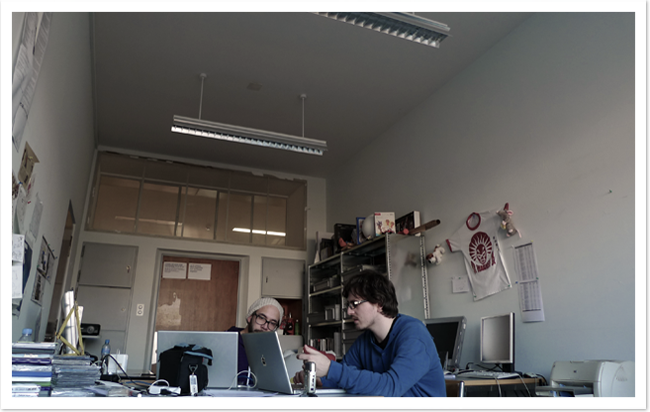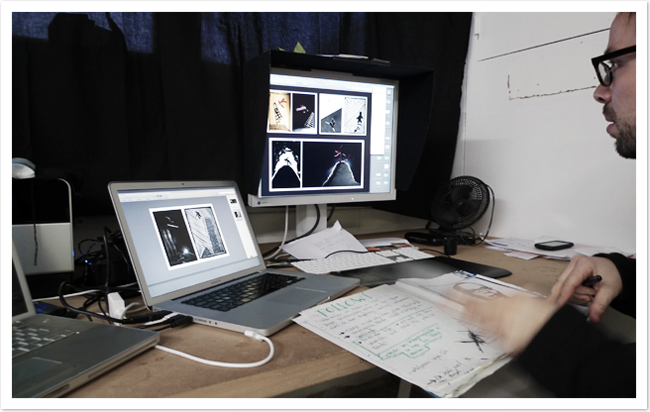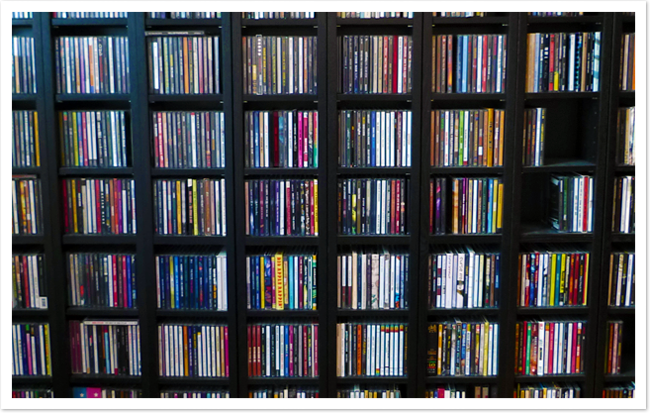Context Inquiry (Rhizom)

Below you can read a summary of our context inquiry and get an impression on the process. Please download the PDF to read the entire context inquiry:
Summary / Conclusions
Through the methodology of combining interviews with direct observation and some small tasks we gained knowledge and inspiration for our project. The interviews consolidated our assumption that more inspirational archives are needed. When we think of “inspirational” we suppose that a personal collection should inspire its owner, like a bookshelf of books is inspiring a viewer and maybe helps to make a decision which book should be read. The findings on the interviewed music collectors illustrates that dealing with personal archives leads to a sustaining memorization process. People still tend to get more inspired by physical items like book- or CD-collections than by a digital collection. The reason are obvious: Haptics, surfaces and physical spatial experience have high impact on human sensory. The fact that the value of files in personal archives are relatively high, it will challenge us to create a tool bearing in mind that the relationship between collection and user is fundamental. In several interviews we saw that people want to have easy access to current data in general. We noticed that the desktop split into areas or the left side in Apple’s “Finder“ which is named “Places” exemplifies the need of fast and easy access. With its currency the value of those files change fast. There where two examples during the interviews where the desktop was kept clean. Possible former files were archived or deleted immediately. We also encountered folders who served as a repository for lazy preservation purposes. (e.g. files which should be deleted or added to the collection but which are kept there due to a lack of time). We think that within the point where a file appears on the scene there is still few motivation which we want to encounter in our project.Impressions
 During the interview with Mario von Rickenbach at ZHdK. He says it would be nice to have a version tracking outside of SVN to see how files change over time. (SVN - “Subversions” is a software especially made for software development)
During the interview with Mario von Rickenbach at ZHdK. He says it would be nice to have a version tracking outside of SVN to see how files change over time. (SVN - “Subversions” is a software especially made for software development)
 Thomas Stöckli at his studio in Zürich. He keeps the generic numbers, made by his camera, in his filenames to keep track of all the copies made off the original file.
He can enter this number in the search field (e.g. in Apple's "Spotlight") and the RAW, TIFFs and JPGs show up.
Thomas Stöckli at his studio in Zürich. He keeps the generic numbers, made by his camera, in his filenames to keep track of all the copies made off the original file.
He can enter this number in the search field (e.g. in Apple's "Spotlight") and the RAW, TIFFs and JPGs show up.
 Snippet of Pascal's Collection at his place. Ronny and Pascal are two music collectors. When they want to listen to music they get inspired by browsing through their collection. iTunes can never match to this atmosphere they say.
A beautiful example of physical collection vs. digital collection.
Snippet of Pascal's Collection at his place. Ronny and Pascal are two music collectors. When they want to listen to music they get inspired by browsing through their collection. iTunes can never match to this atmosphere they say.
A beautiful example of physical collection vs. digital collection.
Acknowledgements
Thank you for your time and the insight into your collections. Mario von Rickenbach Elisa Forster Ronny and Pascal Lisa Looser Thomas Stöckli Daniel Hug Susanne Schumacher from MAdeK< background-research page .............................................................. user experience page >